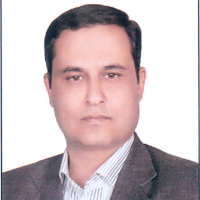Application of multi-criteria decision-making methods in identifying suitable points for rainwater harvesting
Author(s):
Abstract:
Introduction
Deficit of rainfall and consequently, water scarcity is one of the most important problems in arid and semi-arid areas. Water collecting structures have a positive effect on light textured lands due to deposition of clay and organic matter, as well as controlling the floods will enhance the vegetation (Abdollahi et al., 2015). Water Collection in order to store surface water runoff, especially during periods where water availability is limited, is an appropriate option in dry areas (Nazarian and Najafinejad, 2015). Due to the numerous criteria and indicators (such as geomorphology, climate, soil, vegetation etc.) in choosing the type of efficient operation and the most suitable areas for their design and implementation, it is practically difficult to select the correct operation with the expected accuracy (Mia and Skumann 2007); Therefore, one of the most important and essential steps in the application of rainwater collection systems is to identify suitable sites for the implementation of these projects.A general overview of resources shows that collecting and storing rain water in arid areas is one of the best techniques for managing and using rainwater and it is a suitable method to provide the required water in arid and semi-arid areas. Rain water collection requires a spatial assessment and hydrological studies of surface and ground water (Nazarian et al. 2015). The main purpose of this research is to determine the most important criteria for locating suitable areas for rainwater harvesting as well as mapping these locations.
Materials and methods
In this research, based on the results of completed questionnaires from experts, as well as by referring to the research background in this field, to select appropriate areas for collecting water, slope criteria, rainfall, vegetation, salinity, soil texture and Geomorphology were considered as main criterias. Layers were classified in the ArcGIS software. For weighting the criteria, using the AHP technique, matrixes of paired comparisons were created and using the expert opinion, the value of each criterion was determined and the results were entered into the Super Decision software. Land suitability map was made by combining layers. and the map was compared with the Boolean map. In order to verify the accuracy of the results, Land suitability map was compared with a map of successful and unsuccessful executives' work in the.
Results
The final suitability map was obtained as follows. The map is divided into four classes, perfectly suitable, appropriate, slightly suitable and very inappropriate. the area of each of these categories listed in Table 1.تناسب نهایی
Figure (1): Final suitability map
Tabel (1): Area of each category of suitability
Area (ha) Present area
inappropriate 53154 31
very inappropriate 18288 10.7
slightly suitable 47474 27.7
appropriate 38144 22.3
perfectly suitable 14324 8.3
Comparison of implemented projects in the region with modeling shows that 67.5% of the successful structures are in perfectly suitable range, while unsuccessful structures do not have any overlaps with a perfectly suitable range.
Discussion and conclusion
In this research, using AHP, areas were zoned for the implementation of rainwater harvesting projects. The results showed that among the used criteria, the highest score was attributed to rainfall. While this criterion had the lowest value in the study conducted by Yousefi et al. (2015). The reason for this difference can be due to experts' experience of unsuccessful structures in the region. Nevertheless, the results of Ali Kasi (2010) and Al-Adamat (2010) regarding the rainfall criterion are consistent with the present research. After rainfall, the criteria for gradient and salinity were the highest scores respectively. The results showed that slopes of 3 to 8 percent achieved the highest score. The results of this study are consistent with the results of Bulcock et al. (2013) and Akbarpour et al. (2015).Vegetation, soil texture and geomorphology criteria were ranked in subsequent grades, respectively. Places with less vegetation require more attention in terms of providing moisture and increasing coverage. This is in line with the results of Zarrin Abadi and Vaezi (2016). Medium to semi-heavy soil texture has a better suitability for rain water collection. Results showed that, sandy clay loam texture had had the highest score among the sub-criteria. This texture appears mainly in the northern parts of the region, and the results of Akbarpour et al. (2015) confirmed this result.
Between geomorphology criteria Epandage pediments had the highest score due to suitable slope and grading.
The important point is that overlapping information in the GIS without analyzing and performing multi-criteria evaluation operations cannot provide the right planning and decision. Also, when different factors interfere in decision making, their priorities and weights should be determined. Results of modeling in this research is consistent with the results of Ali Khasi (2010), Yousefi et al. (2015), Gohari (2015), Ketsela (2009) and Singh et al. (2017).
Keywords:
Language:
Persian
Published:
Desert Ecosystem Engineering Journal, Volume:7 Issue: 21, 2019
Pages:
45 to 58
magiran.com/p1945925
دانلود و مطالعه متن این مقاله با یکی از روشهای زیر امکان پذیر است:
اشتراک شخصی
با عضویت و پرداخت آنلاین حق اشتراک یکساله به مبلغ 1,390,000ريال میتوانید 70 عنوان مطلب دانلود کنید!
اشتراک سازمانی
به کتابخانه دانشگاه یا محل کار خود پیشنهاد کنید تا اشتراک سازمانی این پایگاه را برای دسترسی نامحدود همه کاربران به متن مطالب تهیه نمایند!
توجه!
- حق عضویت دریافتی صرف حمایت از نشریات عضو و نگهداری، تکمیل و توسعه مگیران میشود.
- پرداخت حق اشتراک و دانلود مقالات اجازه بازنشر آن در سایر رسانههای چاپی و دیجیتال را به کاربر نمیدهد.
In order to view content subscription is required
Personal subscription
Subscribe magiran.com for 70 € euros via PayPal and download 70 articles during a year.
Organization subscription
Please contact us to subscribe your university or library for unlimited access!




